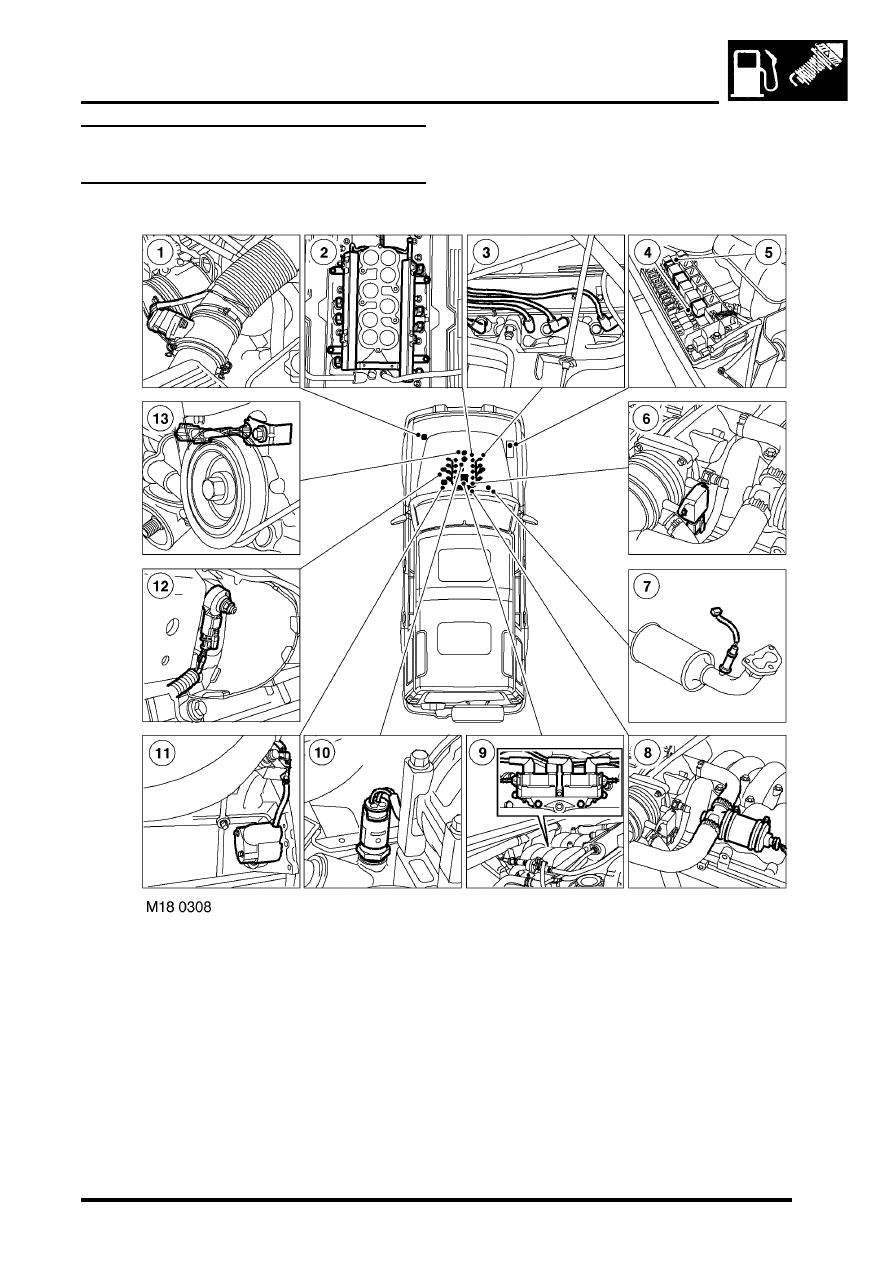Discovery 2. Manual - part 481

ENGINE MANAGEMENT SYSTEM - V8
DESCRIPTION AND OPERATION
18-2-3
Engine management component
location - Engine compartment
1 Mass air flow/ inlet air temperature sensor
2 Fuel injectors
3 High tension leads/spark plugs
4 Fuel pump relay
5 ATC compressor clutch relay/ cooling fan relay
6 Throttle position sensor
7 Heated oxygen sensor
8 Idle air control valve
9 Ignition coils
10 Engine coolant temperature sensor
11 Crankshaft speed and position sensor
12 Knock sensor
13 Camshaft position sensor